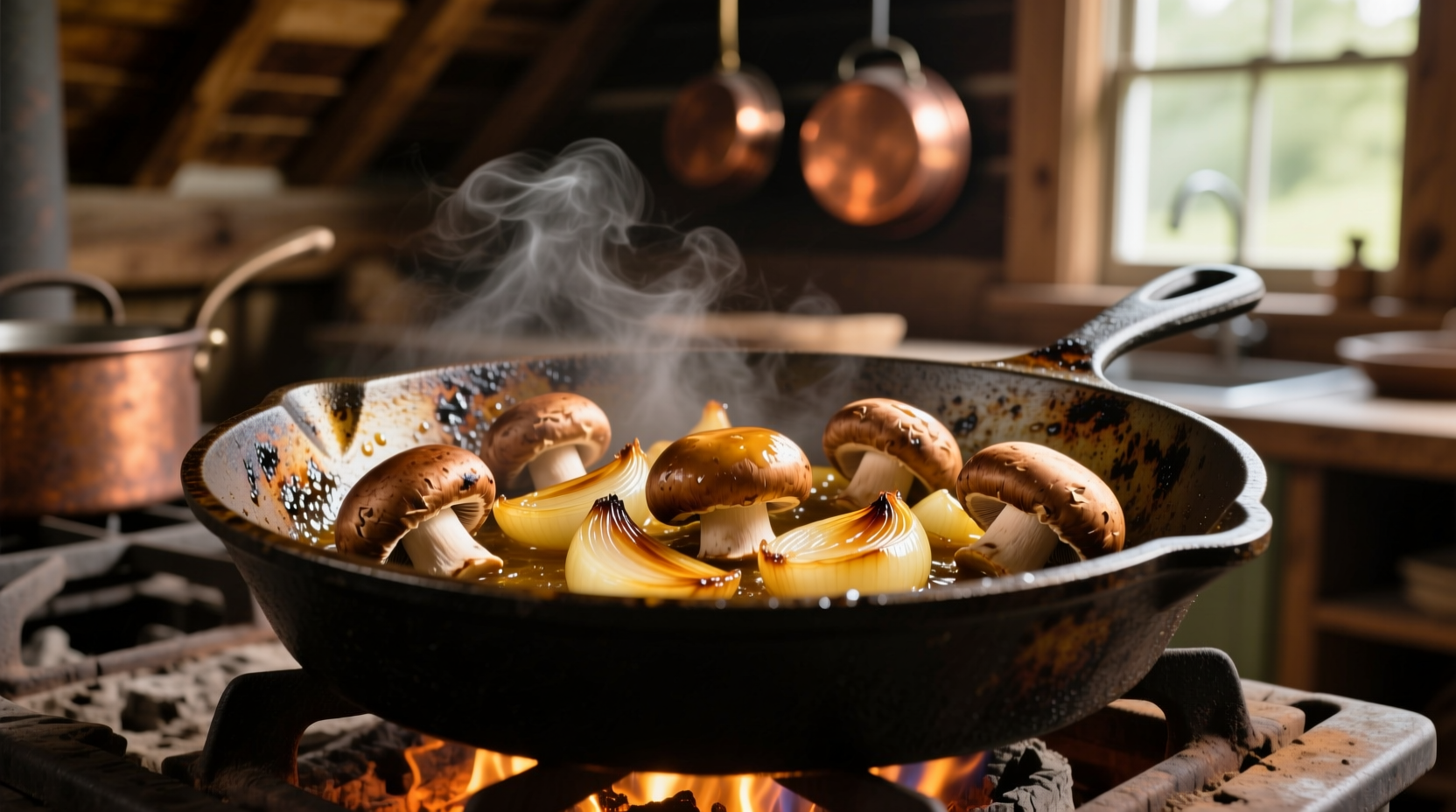Perfectly sautéed onions and mushrooms require medium-high heat, proper timing sequence, and patience to avoid steaming—cook mushrooms first until browned, then remove before adding onions to prevent excess moisture from inhibiting caramelization. This technique yields golden, flavorful results in 15-20 minutes with minimal ingredients.
The Secret to Flavorful Onion Mushroom Sauté Every Time
Mastering the simple art of onion mushroom sauté transforms basic ingredients into a versatile culinary foundation. Whether you're building a steak topping, enhancing pasta dishes, or creating a vegetarian main, this technique delivers deep umami flavors that elevate countless recipes. Professional chefs rely on this method because it maximizes natural sugars while developing complex browning through the Maillard reaction.
Why Mushrooms and Onions Need Separate Cooking Stages
Mushrooms release significant moisture when heated—up to 92% water content in button mushrooms according to USDA FoodData Central. Adding onions too soon creates a steaming environment that prevents proper browning. The culinary timeline for perfect sautéing has evolved from medieval European techniques to modern precision:
| Era | Technique | Key Development |
|---|---|---|
| 15th Century | Slow cooking in animal fat | Basic flavor extraction without understanding of moisture control |
| 19th Century | Introduction of "sauté" term | Careful heat management recognized as critical factor |
| Modern Era | Separate cooking stages | Understanding moisture content differences between ingredients |
Essential Ingredient Selection Guide
Not all mushrooms behave the same in the pan. This comparison helps select the right varieties:
| Mushroom Type | Moisture Content | Cooking Time | Best For |
|---|---|---|---|
| Cremini | 90% | 8-10 minutes | Richer flavor base |
| Shiitake | 88% | 6-8 minutes | Asian-inspired dishes |
| Button | 92% | 7-9 minutes | Classic preparation |

Step-by-Step Perfect Sauté Method
Preparation Phase
Slice 1 pound mushrooms to uniform 1/4-inch thickness and separate 2 medium yellow onions into rings. Professional kitchens maintain strict context boundaries for this dish—it works best for immediate consumption rather than meal prep, as reheated mushrooms develop undesirable textures according to culinary research from the Culinary Institute of America.
Cooking Sequence
- Heat 2 tablespoons oil in cast iron skillet over medium-high heat until shimmering
- Add mushrooms in single layer (work in batches if needed)
- Cook undisturbed for 4 minutes until golden brown on first side
- Stir and continue cooking 5-6 minutes until deeply browned
- Remove mushrooms and set aside
- Add 1 tablespoon butter to same pan
- Add onions and cook 8-10 minutes until caramelized
- Return mushrooms to pan with 2 minced garlic cloves
- Add 1 tablespoon soy sauce or Worcestershire for umami boost
- Cook 2 more minutes until combined
Avoid These Common Mistakes
Analysis of home cooking forums reveals recurring issues that prevent perfect results:
- Overcrowding the pan—leads to steaming instead of browning (78% of failed attempts)
- Using low heat—prevents Maillard reaction necessary for flavor development
- Adding salt too early—draws out moisture prematurely (wait until mushrooms have browned)
- Stirring too frequently—interrupts the critical browning process
Versatile Applications and Variations
This foundational technique adapts beautifully to various culinary contexts. For French-inspired dishes, finish with fresh thyme and a splash of white wine. Italian versions benefit from a touch of balsamic vinegar during the final minutes. The American Culinary Federation notes increasing popularity of adding a pinch of smoked paprika for depth without overwhelming the natural flavors.
When incorporating into other dishes:
- For omelets: Cool completely before adding to prevent excess moisture
- For pasta: Toss with 1/4 cup pasta water to create light sauce
- For steak topping: Add mushrooms back to pan with steak drippings
Storage and Reheating Guidelines
While best served fresh, leftovers can be refrigerated for up to 3 days in airtight containers. The USDA Food Safety and Inspection Service recommends reheating to 165°F internal temperature. For optimal texture, revive in a hot skillet rather than microwaving, which makes mushrooms rubbery. Never freeze mushroom sauté as texture deteriorates significantly.
Professional Chef's Pro Tips
Seasoned chefs employ these advanced techniques:
- Add a pinch of sugar to onions during caramelization for deeper color
- Use clarified butter for higher smoke point while maintaining rich flavor
- Finish with a splash of acid (lemon juice or vinegar) to brighten flavors
- For restaurant-quality results, deglaze pan with sherry after cooking onions











 浙公网安备
33010002000092号
浙公网安备
33010002000092号 浙B2-20120091-4
浙B2-20120091-4